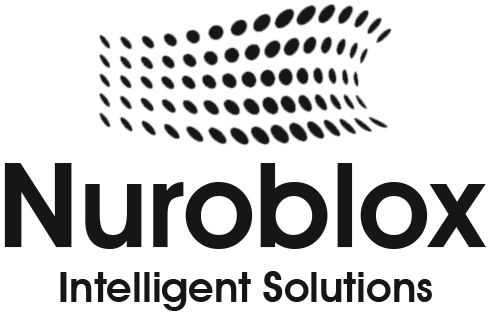How Banks Use AI for Compliance and Risk Management
In the face of growing regulatory complexity and rising operational risks, banks are under immense pressure to stay compliant while remaining agile. Traditional compliance methods-often manual, fragmented, and reactive-are no longer sufficient to meet the demands of today’s fast-paced financial environment.
That’s where AI-powered compliance workflows come in. By automating risk detection, regulatory reporting, and customer verification, artificial intelligence is helping banks shift from reactive compliance to proactive governance. These intelligent systems not only reduce human error and operational costs but also enable faster, more accurate responses to evolving regulations.
In this blog, we’ll explore how AI is transforming compliance in banking making it smarter, faster, and more resilient than ever before.
The Compliance Landscape for Banks Today
As we move through 2025, the regulatory environment for banks is more complex and unpredictable than ever. With shifting political leadership, evolving global standards, and increasing scrutiny around data privacy and financial transparency, banks are navigating a landscape that demands agility, precision, and proactive risk management.
Key Trends Shaping Compliance in 2025
- Regulatory Uncertainty– Following the 2024 elections, changes in agency leadership and policy direction have introduced uncertainty in rulemaking. Banks must prepare for both deregulatory efforts and stricter enforcement depending on jurisdiction.
- Focus on Fair Lending and Consumer Protection– Regulators are emphasizing fair lending practices, transparency in fees, and compliance with updated rules under the Community Reinvestment Act and Dodd-Frank Act.
- AI and Cybersecurity Oversight– Regardless of political shifts, AI usage and cybersecurity remain top priorities. Banks are expected to demonstrate responsible AI governance and robust data protection measures.
- Anti-Money Laundering (AML) and Financial Crime– New rules under the Bank Secrecy Act are being finalized, requiring banks to align their AML programs with updated priorities, including countering the financing of terrorism (CFT).
- State-Level Regulation and Legal Challenges: With federal progress slowing, state regulators are stepping up enforcement, and legal challenges to new regulations are becoming more common.
In this environment, banks must not only comply but also anticipate. AI-powered compliance workflows offer a strategic advantage, helping institutions stay ahead of regulatory changes while minimizing risk and operational burden.
What Are AI Compliance Workflows?
AI compliance workflows are structured, automated processes that utilize artificial intelligence to help banks and financial institutions comply with regulatory requirements, manage risk, and maintain operational integrity. These workflows integrate AI technologies, such as machine learning, natural language processing, and robotic process automation (RPA), to streamline traditionally manual compliance tasks.
Key Components of AI Compliance Workflows:
- Data Ingestion & Classification
AI systems automatically collect and categorize data from various sources (e.g., transactions, customer records, communications) to ensure relevant information is available for compliance checks. - Regulatory Mapping
AI tools analyze regulatory texts and match them to internal policies and procedures, helping banks stay aligned with evolving laws like GDPR, AML, KYC, and Basel III. - Risk Detection & Monitoring
Machine learning models identify patterns and anomalies that may indicate fraud, money laundering, or other compliance risks, often in real time. - Automated Reporting
AI generates accurate, timely compliance reports for internal audits and regulatory submissions, reducing human error and improving transparency. - Audit Trail & Documentation
Every action taken by the AI system is logged, creating a clear audit trail that regulators can review, ensuring accountability and traceability.
Key Areas Where AI Is Enhancing Compliance Workflows

As regulatory demands grow more complex and costly, banks are increasingly turning to AI to modernize their compliance operations. AI technologies are not just automating tasks, they’re transforming how compliance is managed, monitored, and enforced. Below are the most impactful areas where AI is enhancing compliance workflows in banking:
1. Intelligent Document Analysis- AI-powered tools can rapidly scan, interpret, and extract critical information from contracts, vendor documents, and regulatory texts. These systems identify key clauses, flag inconsistencies, and cross-reference documents with internal policies to generate preliminary risk assessments.
- Benefit: Reduces manual review time and minimizes human error.
- Use Case: Reviewing third-party vendor contracts for compliance with data protection laws.
2. Anti-Money Laundering (AML) Surveillance- Traditional AML systems rely on static rules, which often miss sophisticated laundering schemes. AI-driven AML solutions use dynamic algorithms to detect unusual transaction patterns, behavioral anomalies, and hidden relationships across accounts.
- Benefit: Real-time detection and reduced false positives.
- Use Case: Flagging complex layering techniques used in money laundering.
3. Know Your Customer (KYC) Automation- AI streamlines KYC by automating identity verification, document analysis, and customer risk profiling. Natural Language Processing (NLP) helps extract data from unstructured sources like scanned IDs and utility bills.
- Benefit: Faster onboarding and improved accuracy.
- Use Case: Automating KYC for high-volume retail banking customers.
4. Regulatory Change Management- AI systems monitor global regulatory updates and map changes to internal compliance frameworks. This ensures banks stay aligned with evolving laws such as GDPR, Basel III, and local financial regulations.
- Benefit: Proactive compliance and reduced legal risk.
- Use Case: Automatically updating internal policies based on new data privacy laws.
5. Real-Time Transaction Monitoring- AI enables continuous surveillance of financial transactions to detect fraud, insider trading, and market manipulation. These systems learn from historical data and adjust thresholds dynamically.
- Benefit: Immediate risk alerts and adaptive monitoring.
- Use Case: Detecting unauthorized trading activity in investment banking.
6. Automated Reporting and Audit Trails- AI tools generate compliance reports and maintain detailed audit logs. These systems ensure consistency, accuracy, and traceability for internal audits and regulatory reviews.
- Benefit: Saves time and improves transparency.
- Use Case: Generating monthly AML compliance reports for regulators.
7. Communication Surveillance- AI analyzes emails, chats, and voice communications to detect potential misconduct or breaches of compliance policies. NLP helps understand context and intent, improving detection capabilities.
- Benefit: Early detection of insider threats or policy violations.
- Use Case: Monitoring employee communications for signs of collusion or fraud.
Conclusion
AI is reshaping compliance in banking by automating complex tasks, improving accuracy, and enabling real-time risk management. With smarter workflows, banks can stay ahead of regulatory changes, reduce operational costs, and enhance transparency. As AI continues to evolve, it will become an essential pillar of modern compliance strategies, driving both efficiency and trust.


